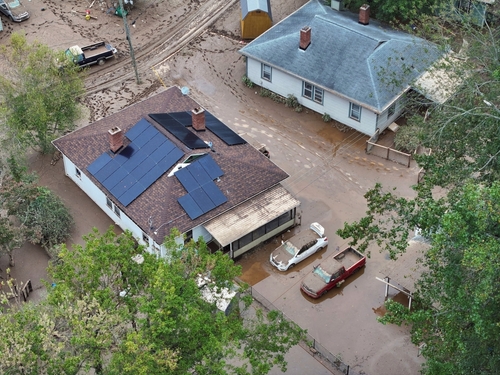
On Saturday, U.S. Rep. Anthony D’Esposito (R-NY), asked FEMA for answers on how it used advanced forecasting and rainfall modeling to prepare for Hurricane Helene.
D’Esposito, chair of the House Homeland Security Subcommittee on Emergency Management and Technology, sent a letter to the FEMA Administrator Deanne Criswell, asking for clarification the agency’s pre-positioning efforts prior to the storm making landfall on Sept. 19 in Florida.
“It is understood that forecasting may fluctuate as a storm progresses; however, underestimations and inaccurate forecasts may harm those communities that are unknowingly vulnerable within the storm’s path. In a natural disaster like Hurricane Helene, the rapidly changing and dynamic conditions prove to be a challenge in emergency management,” D’Esposito wrote. “Regarding FEMA’s pre-positioning efforts, homeland security advisor, Liz Sherwood-Randall, stated earlier this week that FEMA prioritized pre-positioning resources and supplies to Florida before pivoting to North Carolina. As you know, community resiliency depends on accurate forecasting and the pre-positioning of resources in advance of a natural disaster. Buncombe County Manager, Avril Pinder claims that water was requested at the state level, ‘even before the storm started,’ yet had been delayed, further exacerbating the water shortage present in Asheville, North Carolina.”
D’Esposito said initial reports have indicated that FEMA’s initial modeling may have contributed to the agency’s response in southeastern communities, especially in North Carolina.
“I have heard reports that many Southeastern communities were underprepared and unaware of the potential for destructive flooding in the region,” he wrote. “In North Carolina, where the devastation has been especially acute, residents have reported that the severity and scope of the flooding took them by surprise. A local sheriff in Asheville, North Carolina, Quentin Miller, declared: ‘To say this caught us off-guard would be an understatement.’”
D’Esposito is requesting FEMA provide information on its advanced forecasting models, pre-positioning of resources and coordination with government partners surrounding storms, as well as the accuracy of its advance forecasting and rainfall modeling for storms and how the agency has adjusted its techniques since Helene.
D’Esposito gave the agency until Oct. 18 to respond.




